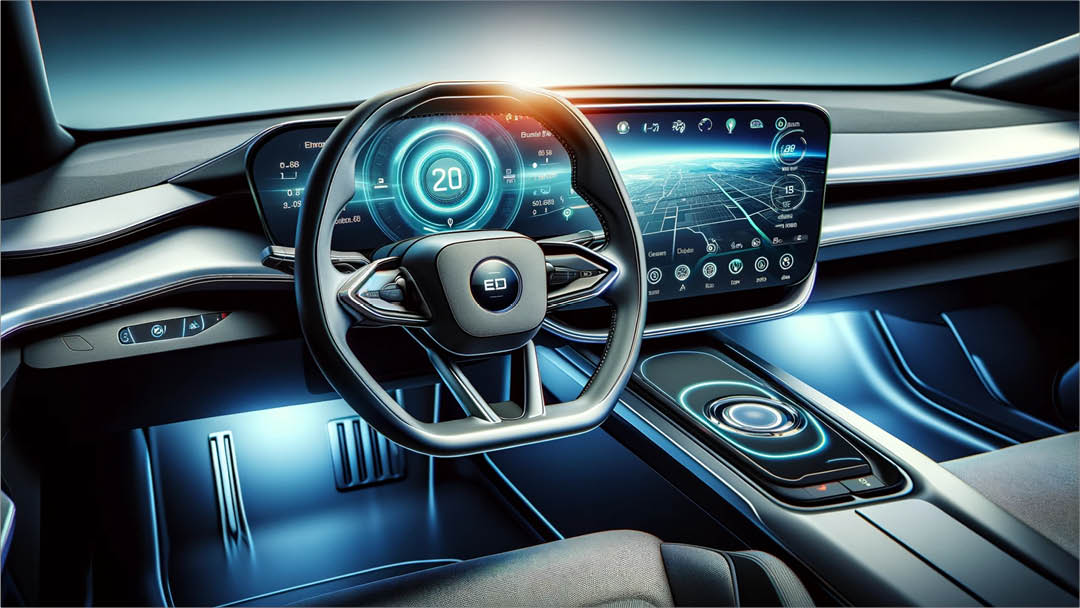In Brief
- The digital cockpit, with its connectivity and advanced features, presents unique cybersecurity risks that must be proactively addressed.
- Potential consequences of a cyberattack range from privacy breaches to direct threats to vehicle safety and control.
- Acsia prioritises robust cybersecurity solutions, ensuring your cockpit is built with protection at its core, fostering trust in the technology.
Main Content
The transformation of the car’s cockpit is astounding. Gone are the days of simple knobs and dials. Today’s cockpits offer sleek touchscreens, intuitive voice commands, real-time navigation, and a seamless connection to our smartphones. However, this evolution in features comes with a parallel challenge that demands equal attention: cybersecurity. While we’re captivated by what our digital cockpits can do, we must ensure they are built to withstand the threats of a connected world.
Understanding the Risks
Imagine your digital cockpit as a miniature version of the internet residing within your car. As with any connected environment, vulnerabilities exist. Let’s break down the expanding landscape of automotive cybersecurity risks:
- The Web on Wheels: Wi-Fi hotspots, cellular connectivity, Bluetooth, and even technologies like V2X (vehicle-to-vehicle or vehicle-to-infrastructure communication) are incredibly useful but also create more doors for potential attackers.
- Data: The New Gold: Your cockpit is a treasure trove of data – your location, driving patterns, potentially contact lists, or even payment information linked to apps. This makes it a prime target for hackers seeking to steal and exploit valuable information.
- Software as the Weak Link: The code behind the cockpit’s features is complex. Vulnerabilities, whether accidental or deliberately introduced, can give attackers a way in.
- From Nuisance to Catastrophe: Automakers must think beyond data theft. In the worst-case scenario, a cyberattack could compromise safety-critical systems, potentially allowing attackers to remotely manipulate the vehicle itself.
Cybersecurity: A Multi-Layered defence
Protecting the digital cockpit isn’t about a single silver bullet solution. True cybersecurity requires a holistic approach:
- Secure Foundations: Meticulous coding practices, adherence to standards like ISO/SAE 21434, and the use of secure software libraries lay a robust groundwork.
- Walls and Moats: Encryption of data at rest and in transit, firewalls, and strict authentication protocols make it harder for attackers to gain access and exfiltrate sensitive information.
- Intrusion Detection: Systems that can detect anomalies and unusual network traffic can act as an early warning system, allowing for swift containment of attacks.
- The Key to Agility: Over-the-air (OTA) update capabilities are paramount. Security flaws will emerge; being able to patch them quickly across your entire vehicle fleet is vital.
- Proactive defence: Penetration testing (ethical hacking) and threat modelling help you stay one step ahead, identifying potential weaknesses before they’re exploited by malicious actors.
Security by Design: Building Trust in the Cockpit
Just as structural safety is designed into a car from the first blueprints, cybersecurity must be an integral thread throughout the digital cockpit’s development cycle. This involves:
- Mindset Shift: Security can’t be an afterthought. Every engineer, every line of code, needs to reflect a security-conscious approach.
- Leveraging Standards: Established industry best practices provide a comprehensive roadmap and facilitate collaboration with suppliers also adhering to these standards.
- Vigilance as the Norm: Cyber threats evolve. Security requires continuous monitoring, the ability to swiftly address new vulnerabilities, and fostering a culture of security awareness.
Acsia: Your Cybersecurity Partner
Acsia understands that a secure digital cockpit is essential for both automakers and drivers. Our expertise encompasses:
- Threat Analysis: We help you identify and prioritise cyber risks relevant to your specific cockpit design.
- Secure Development: We integrate security principles throughout the software development lifecycle, minimising vulnerabilities.
- Testing and Validation: Our rigorous testing helps uncover potential security weaknesses before your cockpit reaches the road.
Ready to make cybersecurity a priority in your digital cockpit projects? Contact Acsia Technologies to discuss our comprehensive cybersecurity solutions. Visit our website to learn how we can help you build trust through security.










